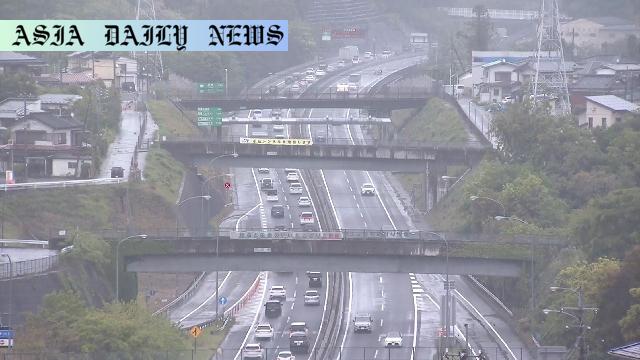Travel hits peak as Japan’s spring holiday period concludes.
Travel sees peak return traffic as Japan’s spring holiday ends.
Tokaido Shinkansen Line trains are almost fully booked.
Narita International Airport expects 1.17M travelers between April 25 and May 6.
Booking rates for flights rise over 80% for top airlines.

Record Numbers Mark Post-Spring Travel Peaks in Japan
Japan’s travel landscape took center stage this spring holiday season as millions of people returned home, signaling a massive surge in transportation demand. On the final day of Japan’s spring holiday period, domestic and international transportation networks were filled to capacity, reflecting a significant recovery in travel trends since the COVID-19 pandemic. Major transportation hubs and services, such as the Tokaido Shinkansen Line, were almost fully booked. The influx of passengers indicated a growing normalization of leisure and family travel activities previously impacted over recent years.
The Revival of Holiday Train Travel
Among the most notable aspects of this year’s travel surge is the overwhelming demand for bullet trains, particularly on popular routes like the Tokaido Shinkansen. Reports detailed how reserved seats for inbound trains on the Tohoku and Akita Shinkansen Lines had completely sold out while many more travelers utilized unreserved seating to make their return journeys. This trend exemplifies how efficient high-speed rail networks remain popular and critical in Japan’s domestic travel, particularly during peak holiday periods. The reliance on bullet trains during holidays underpins their role as a trustworthy and reliable mode of transportation for families and individuals alike.
Airports Witness Peak Domestic and International Travel
Air travel also saw a significant boom this season as major domestic flights for destinations such as Tokyo and Osaka hit booking rates exceeding 80% for airlines like All Nippon Airways and Japan Airlines. Furthermore, Narita International Airport forecasted the arrival of over 54,000 international travelers on May 6, illustrating the immense role global tourism plays in Japan’s post-pandemic recovery. Notably, projections by Narita’s operator indicate the airport will handle an estimated 1.17 million international flights between April 25 and May 6—figures reminiscent of pre-pandemic levels in 2019, affirming the resilience and adaptability of Japan’s travel sector.
Tourism Recovery Reflects Pre-COVID Trends
These developments highlight how tourism, both domestic and international, has rebounded remarkably in Japan. A resurgence in travel habits illustrates global confidence as people are increasingly investing in reconnecting with loved ones or enjoying well-deserved vacations. Unfortunately, the challenges of managing high demand remain—transport congestion, limited seating availability, and logistical complexities pose difficulties for providers and passengers alike. Yet, the ability to rival pre-pandemic figures also demonstrates well-coordinated efforts to maintain schedules and efficiency during national holidays in Japan. All indicators point to a renewed love for travel, both as an essential aspect of leisure and as a reflection of normalization after global disruptions.
Commentary
The Significance of Travel During Holiday Peaks
The end of Japan’s spring holiday period always marks an extraordinary time for transportation systems, and this year was no exception. What stands out is not only the sheer number of people utilizing bullet trains, planes, and international flights but also the way these numbers reflect a broader trend of revival in the tourism industry. Such renewed activity goes a long way in underscoring just how important travel and transportation are to cultural traditions, economic growth, and individual well-being in a post-pandemic world. This spring saw families, friends, and colleagues reconnect, driving demand for travel across the country and abroad.
Post-Pandemic Growth and Challenges
It’s particularly heartening to see figures that closely match or exceed pre-pandemic levels, suggesting that global travelers and domestic holidaymakers alike feel safe and eager to travel again. However, this recovery comes with logistical challenges: packed trains, sold-out seating capacity, and high booking rates that occasionally strain resources. While governments and operators have ensured a smooth and efficient experience at airports and train stations, holidays like this underscore the need for continual investment in infrastructure to meet future demands without compromising customer satisfaction.
Looking Ahead: Encouraging Resilience in the Travel Industry
Events like Japan’s spring holiday comeback serve as strong indicators of resilience in the global travel sector. They also show how people increasingly prioritize travel as a meaningful and essential activity. As we navigate the evolving landscape of holiday travel, ongoing investments in services, advanced booking systems, and renovated transport facilities, alongside proper assessment of peak periods, will be pivotal. The lessons learned from this boom in holiday traffic not only provide hope but also an optimistic outlook for worldwide tourism recovery.


